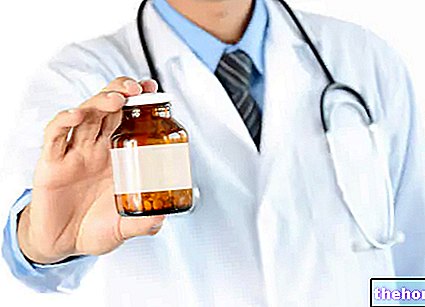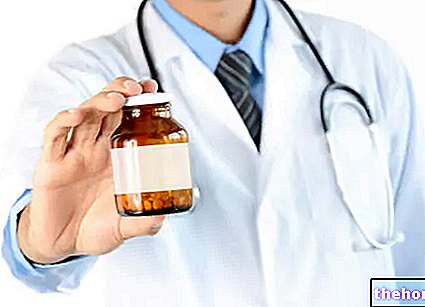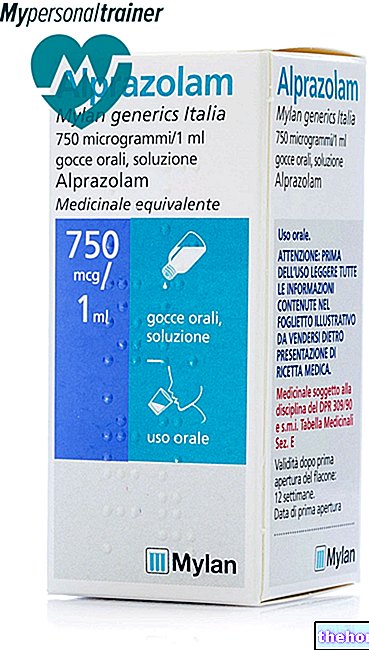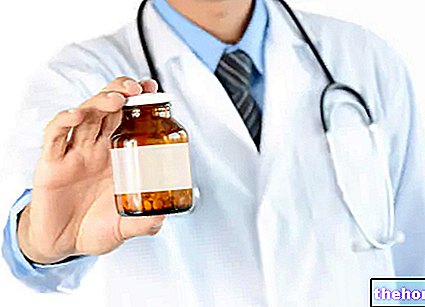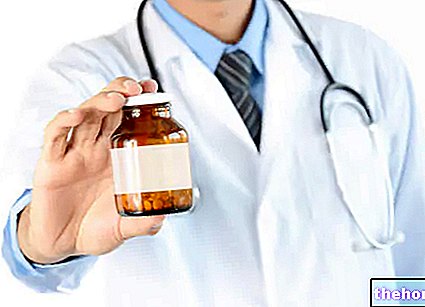Active ingredients: Ambroxol (Ambroxol hydrochloride)
AMBROXOLO ANGELINI 3 mg / ml Syrup
Package inserts for Ambroxol - Generic Drug are available for pack sizes:- AMBROXOLO ANGELINI 3 mg / ml Syrup
- AMBROXOLO ANGELINI 7.5 mg / ml Solution to be nebulised
Why is Ambroxol used - Generic drug? What is it for?
This medicine contains the active substance ambroxol hydrochloride, which belongs to a group of medicines called mucolytics, used to help clear mucus from the airways.
AMBROXOLO ANGELINI is indicated for the treatment of secretion in acute and chronic diseases of the bronchi and lungs (in the presence of cough and phlegm).
Contraindications When Ambroxol should not be used - Generic drug
Do not take AMBROXOLO ANGELINI
- if you are allergic to ambroxol hydrochloride or any of the other ingredients of this medicine
- if you have severe liver or kidney problems
AMBROXOLO ANGELINI should not be taken in children under 2 years of age.
Precautions for use What you need to know before taking Ambroxol - Generic drug
Talk to your doctor or pharmacist before taking AMBROXOL ANGELINI.
Take this medicine with caution and tell your doctor:
- if you have a stomach or bowel problem called a peptic ulcer
- if you have kidney problems (kidney failure).
There have been reports of severe skin reactions (Stevens Johnson syndrome or toxic epidermal necrolysis) associated with the administration of ambroxol. Particularly in the initial stage of such illnesses, you may experience flu-like symptoms, such as fever, pain, cold (rhinitis), cough and sore throat.
If you get a skin rash (including lesions of mucous membranes such as mouth, throat, nose, eyes, genitals) stop taking Ambroxol ANGELINI and contact your doctor immediately. If you experience lesions of the skin or mucous membranes, consult your doctor and stop treatment with AMBROXOLO ANGELINI.
Interactions Which drugs or foods can modify the effect of Ambroxol - Generic drug
Tell your doctor or pharmacist if you are taking, have recently taken or might take any other medicines.
AMBROXOLO ANGELINI does not interfere with other medicines.
Warnings It is important to know that:
Children
AMBROXOLO ANGELINI should not be given to children under 2 years of age, as it can obstruct the bronchi and prevent normal breathing.
Pregnancy and breastfeeding
If you are pregnant or breast-feeding, think you may be pregnant or are planning to have a baby, ask your doctor or pharmacist for advice before taking this medicine.
Pregnancy: it is not recommended to use AMBROXOLO ANGELINI during pregnancy, especially during the first three months. If you are pregnant, take AMBROXOLO ANGELINI only in cases of absolute necessity and under the direct supervision of your doctor.
Breastfeeding: the use of AMBROXOLO ANGELINI during breastfeeding is not recommended.
Driving and using machines
There are no data available to establish the effects on the ability to impair driving or using machines.
AMBROXOLO ANGELINI contains sodium metabisulphite and sorbitol
This medicinal product contains sodium metabisulfite which can rarely cause severe hypersensitivity reactions and bronchospasm. This medicine contains sorbitol, a type of sugar. If you have been told by your doctor that you have an intolerance to some sugars, contact your doctor before taking this medicinal product.
Dosage and method of use How to use Ambroxol - Generic drug: Dosage
Always take this medicine exactly as described in this leaflet or as directed by your doctor or pharmacist. If in doubt, consult your doctor or pharmacist.
Take AMBROXOL ANGELINI after meals and avoid taking it for prolonged periods.
Adults
The recommended dose is 10 ml (30 mg) 3 times a day.
Use in children over 5 years of age
The recommended dose is 5 ml (15 mg) 3 times a day.
Use in children 2 to 5 years of age
The recommended dose is 2.5 ml (7.5 mg) 3 times a day.
If you forget to take AMBROXOLO ANGELINI
Do not take a double dose to make up for a forgotten dose.
If you have any further questions on the use of this medicine, ask your doctor or pharmacist.
Overdose What to do if you have taken an overdose of Ambroxol - Generic Medication
If you take more AMBROXOL ANGELINI than you should
No cases of overdose have been reported. Symptoms of an overdose may correspond to undesirable effects that can occur at recommended doses.
If you accidentally take an overdose of this medicine, notify your doctor immediately or go to the nearest hospital.
Side Effects What are the side effects of Ambroxol - Generic drug
Like all medicines, this medicine can cause side effects, although not everybody gets them. The following side effects may occur:
Common (which may affect up to 1 in 10 people)
- changes in the sense of taste (dysgeusia)
- loss of sensation (hypoesthesia) of the mouth and pharynx
- nausea.
Uncommon (may affect up to 1 in 100 people)
- vomiting, diarrhea, digestive difficulties (dyspepsia) and abdominal pain
- dry mouth.
Rare (may affect up to 1 in 1000 people)
- hypersensitivity reactions
- rash, hives
Not known (frequency cannot be estimated from the available data)
- anaphylactic reactions, including anaphylactic shock, angioedema (swelling and rapid development of the skin, subcutaneous tissues, mucosa and submucosal tissues) and itching.
- severe skin adverse reactions (including erythema multiforme, Stevens-Johnson syndrome / toxic epidermal necrolysis and acute generalized exanthematous pustulosis
- occlusion of the bronchi (bronchial obstruction)
- heartburn and burning of the esophagus (heartburn)
- dry throat.
Reporting of side effects
If you get any side effects, talk to your doctor or pharmacist. This includes any possible side effects not listed in this leaflet. You can also report side effects directly via the national reporting system at www.agenziafarmaco.it/it/responsabili. By reporting side effects you can help provide more information on the safety of this medicine.
Expiry and Retention
Keep this medicine out of the sight and reach of children.
Do not use this medicine after the expiry date which is stated on the package after "EXP". The expiry date refers to the last day of that month.
Do not store above 25 ° C. The shelf life after first opening the bottle is 3 weeks.
Do not throw any medicines via wastewater or household waste. Ask your pharmacist how to throw away medicines you no longer use. This will help protect the environment.
Other Information
What AMBROXOLO ANGELINI 3 mg / ml syrup contains
- The active ingredient is ambroxol hydrochloride. 100 ml of syrup contains 300 mg of ambroxol hydrochloride
- The other ingredients are: benzoic acid, sodium metabisulfite, citric acid monohydrate, sodium hydroxide, povidone, 70% sorbitol solution, 85% glycerol, sodium cyclamate, raspberry flavor, purified water.
Description of the appearance of AMBROXOLO ANGELINI and contents of the pack
AMBROXOLO ANGELINI 3 mg / ml syrup: package containing a glass bottle of 250 ml of syrup with measuring cup with 2.5, 5, 7.5 and 10 ml notches.
Source Package Leaflet: AIFA (Italian Medicines Agency). Content published in January 2016. The information present may not be up-to-date.
To have access to the most up-to-date version, it is advisable to access the AIFA (Italian Medicines Agency) website. Disclaimer and useful information.
01.0 NAME OF THE MEDICINAL PRODUCT
AMBROXOL ANGENERICO 3 MG / ML SYRUP
02.0 QUALITATIVE AND QUANTITATIVE COMPOSITION
AMBROXOLO ANGENERICO 3 mg / ml Syrup
100 ml of syrup contains 300 mg of ambroxol hydrochloride.
Excipient (s) with known effects: sodium metabisulfite, sorbitol.
For the full list of excipients, see section 6.1.
03.0 PHARMACEUTICAL FORM
Syrup.
04.0 CLINICAL INFORMATION
04.1 Therapeutic indications
Treatment of secretion disorders in acute and chronic bronchopulmonary diseases.
04.2 Posology and method of administration
Dosage
Adults: 10 ml (30 mg) 3 times a day.
Children over 5 years: 5 ml (15 mg) 3 times a day.
Children from 2 to 5 years: 2.5 ml (7.5 mg) 3 times a day.
Method of administration
It is recommended to take the syrup after meals.
Do not use ambroxol for prolonged treatments.
04.3 Contraindications
Hypersensitivity to the active substance or to any of the excipients.
Severe hepatic and / or renal disorders.
The use of the medicinal product is contraindicated in case of rare hereditary diseases which may be incompatible with one of the excipients (see section 4.4).
The medicine is contraindicated in children under 2 years of age.
04.4 Special warnings and appropriate precautions for use
Ambroxol should be administered with caution to patients with peptic ulcer.
In very few cases, severe skin lesions such as Stevens Johnson syndrome and toxic epidermal necrolysis (NET) have been observed simultaneously with the administration of expectorants such as ambroxol hydrochloride. Most of these could be explained by the severity of underlying diseases. or other concomitant medications. Also in the initial phase of Stevens Johnson syndrome or toxic epidermal necrolysis (NET), patients may initially experience non-specific flu-like symptoms, such as fever, chills, rhinitis, cough and sore throat. Due to these misleading symptoms it is possible that a
symptomatic treatment with cough and cold therapy.
If new lesions of the skin or mucous membranes occur, consult a doctor immediately and as a precaution stop treatment with ambroxol hydrochloride.
In case of mild or moderate renal insufficiency, Ambroxol Angenerico can only be used after consulting your doctor.
As with any drug metabolised by the liver and eliminated by the kidney, accumulation of the metabolites of ambroxol generated in the liver can occur in the presence of severe renal insufficiency (see section 4.3).
Mucolytics can induce bronchial obstruction in children under 2 years of age. In fact, the drainage capacity of the bronchial mucus is limited in this age group, due to the physiological characteristics of the respiratory tract. They should therefore not be used in children less than 2 years of age (see section 4.3).
AMBROXOLO ANGENERICO 3mg / ml Syrup contains sodium metabisulphite; Rarely it can cause severe hypersensitivity reactions and bronchospasm.
It also contains:
sorbitol: Patients with rare hereditary problems of fructose intolerance should not take this medicine.
04.5 Interactions with other medicinal products and other forms of interaction
AMBROXOL ANGENERICO generally does not interfere with other medicines.
04.6 Pregnancy and breastfeeding
Pregnancy
Ambroxol hydrochloride crosses the placental barrier. Animal studies have not shown any direct or indirect harmful effects on pregnancy, embryonal / fetal development, parturition or postnatal development.
Although preclinical studies and extensive clinical experience have not shown any harmful effects after the 28th week of gestation, it is advisable to take the normal precautions on taking medicines during pregnancy. Especially during the first trimester it is not recommended to take Ambroxol. Angeneric.
Feeding time
Ambroxol hydrochloride is excreted in breast milk. Although no adverse effects are expected in breastfed infants, the use of Ambroxol Angenerico is not recommended during breastfeeding.
04.7 Effects on ability to drive and use machines
There is no evidence of an effect on the ability to drive and use machines.
No studies on the effects on the ability to drive and use machines have been performed.
04.8 Undesirable effects
Adverse reactions are listed below by system organ class and frequency, according to the following categories:
Very common (≥1 / 10)
Common (≥1 / 100,
Uncommon (≥1 / 1,000 to
Rare (≥1 / 10,000,
Very rare (
Not known: frequency cannot be estimated from the available data.
Immune system disorders, skin and subcutaneous tissue disorders
Rare: rash, urticaria
Not known: anaphylactic reactions including anaphylactic shock, angioedema, pruritus and other hypersensitivity reactions.
Nervous system disorders
Common: dysgeusia (change in taste).
Gastrointestinal, respiratory, thoracic and mediastinal disorders
Common: nausea, pharyngeal and oral hypoesthesia.
Uncommon: vomiting, diarrhea, dyspepsia, abdominal pain, dry mouth.
Not known: dry throat, bronchial obstruction, heartburn.
Reporting of suspected adverse reactions
Reporting of suspected adverse reactions occurring after authorization of the medicinal product is important as it allows continuous monitoring of the benefit / risk balance of the medicinal product. Healthcare professionals are asked to report any suspected adverse reactions via the national reporting system. "address: www.agenziafarmaco.gov.it/it/responsabili".
04.9 Overdose
So far, no specific symptoms of overdose have been reported in humans. The symptoms observed in cases of accidental overdose and / or in cases of medication errors are consistent with the expected undesirable effects of Ambroxol at recommended doses and may require further treatment. symptomatic treatment.
05.0 PHARMACOLOGICAL PROPERTIES
05.1 Pharmacodynamic properties
Pharmacotherapeutic group: expectorants, excluding combinations with cough suppressants; mucolytic, ATC code: R05CB06.
Ambroxol works by regulating the transport of secretions throughout the respiratory tree. It also has a marked mucolytic and mucoregulatory activity. The pharmacological effect is expressed on the quality of the mucus, on the ciliary function and on the production of alveolar surfactant.
Mucus quality: ambroxol stimulates the activity of the serous glandular cells, discharges the mucus granules already formed, normalizes the viscosity of the secretion and finally regulates the activity of the tubulo-acinar glands of the respiratory tree.
Ciliary function: ambroxol increases both the number of microvilli of the vibratile epithelium and the frequency of ciliary movements, with a consequent increase in the speed of transport of the secreted produced and finally leads to the normalization of respiratory tones, improving expectoration.
Increase in surfactant production: ambroxol stimulates type II pneumocytes to a greater production of alveolar surfactant, thus ensuring the stability of the lung tissue, allowing correct bronchiolo-alveolar purification and finally facilitating respiratory mechanics and favoring gas exchange.
05.2 Pharmacokinetic properties
The bioavailability of ambroxol was evaluated in humans after oral administration of the drug in healthy volunteers. It has been inferred that ambroxol is rapidly absorbed through the enteric tract. The half-life is approximately 10 hours and maximum serum levels are reached around the second hour. The drug is eliminated almost completely via the kidneys in the form of metabolites or unchanged.
05.3 Preclinical safety data
Ambroxol hydrochloride has a low index of acute toxicity. In repeated dose studies, oral doses of 150 mg / kg / day (4 weeks mouse), 50 mg / kg / day (52 and 78 week rats), 40 mg / day kg / day (rabbits 26 weeks) and 10 mg / kg / day (dogs 52 weeks) corresponded to no observable adverse effect dose levels (NOAELs) No target organ for toxicological effects was identified.
Intravenous toxicity studies with ambroxol hydrochloride in rats, using 4, 16 and 64 mg / kg / day, and in dogs using 45, 90 and 120 mg / kg / day (3 h / day infusions), did not show severe systemic and oral toxicity including histopathology. All adverse effects were reversible.
Ambroxol hydrochloride was shown to be non-embryotoxic and non-teratogenic in studies conducted in rats and rabbits when tested at oral doses up to 3000 mg / kg / day and 200 mg / kg / day, respectively. Fertility in both male and female rats was not affected by doses up to 500 mg / kg / day. The "no observed adverse effect level" (NOAEL) during peri- and postnatal development is equal to 50 mg / kg / day, while doses of 500 mg / kg / day have shown a slight toxicity on the pregnant woman and on the offspring, which manifests itself with a delay in the increase of body weight and with a reduction in the number of births.
Genotoxicity studies in vitro (Ames test and chromosomal aberration test) and in vivo (mouse micronucleus test) did not reveal any mutagenic potential of ambroxol hydrochloride.
Ambroxol hydrochloride was not shown to be potentially carcinogenic in carcinogenicity studies conducted in the mouse (50, 200 and 800 mg / kg / day) and in the rat (65, 250 and 1000 mg / kg / day) when treated with a diet for 105 and 116 weeks respectively.
06.0 PHARMACEUTICAL INFORMATION
06.1 Excipients
Benzoic acid - sodium metabisulfite - citric acid monohydrate - sodium hydroxide - povidone - sorbitol, solution 70% - glycerol 85% - sodium cyclamate - raspberry flavor - purified water.
06.2 Incompatibility
None.
06.3 Period of validity
3 years.
The shelf life after first opening the bottle is 3 weeks.
06.4 Special precautions for storage
DO NOT STORE AT TEMPERATURE EXCEEDING 25 ° C
06.5 Nature of the immediate packaging and contents of the package
Type III dark glass bottle containing 250 ml of syrup with measuring cup with 2.5, 5, 7.5 and 10 ml notches.
06.6 Instructions for use and handling
No special instructions.
Unused medicine and waste derived from this medicine must be disposed of in accordance with local regulations.
07.0 MARKETING AUTHORIZATION HOLDER
ANGENERICO S.p.A.
Via Nocera Umbra, 75
00181 Rome
08.0 MARKETING AUTHORIZATION NUMBER
AIC n °. 035980046
09.0 DATE OF FIRST AUTHORIZATION OR RENEWAL OF THE AUTHORIZATION
Date of first authorization: 01 March 2005
Date of most recent renewal: February 22, 2012

